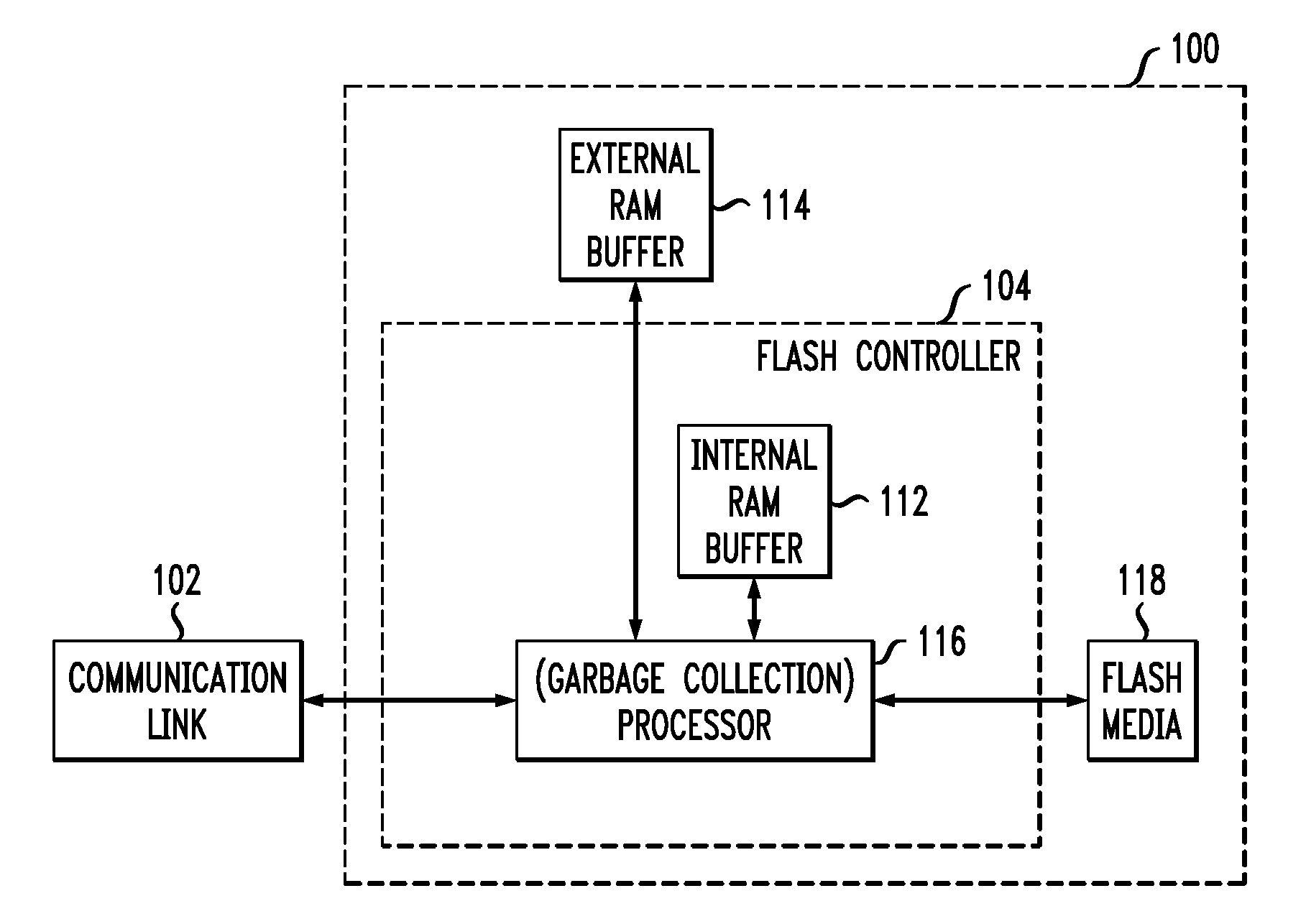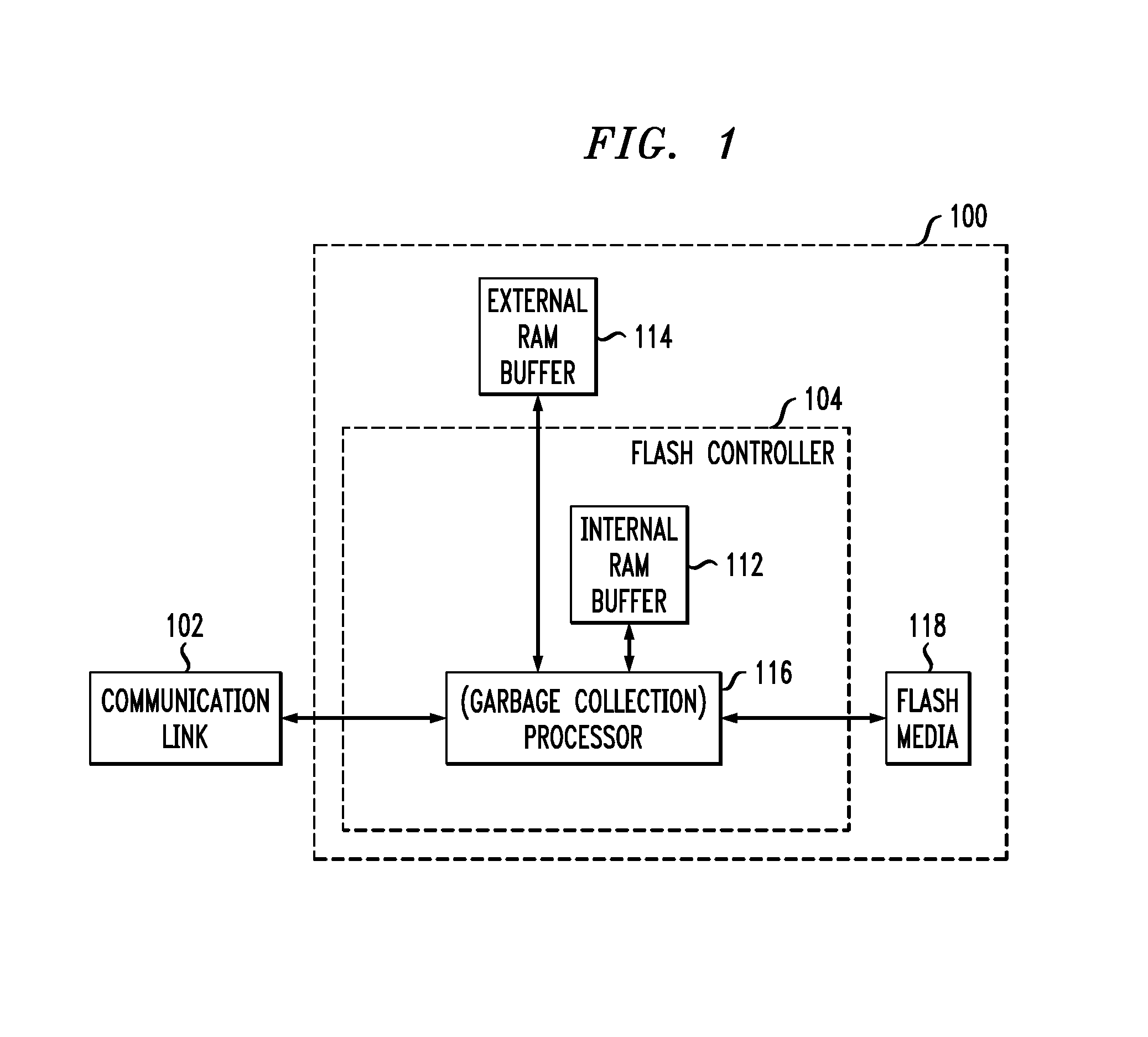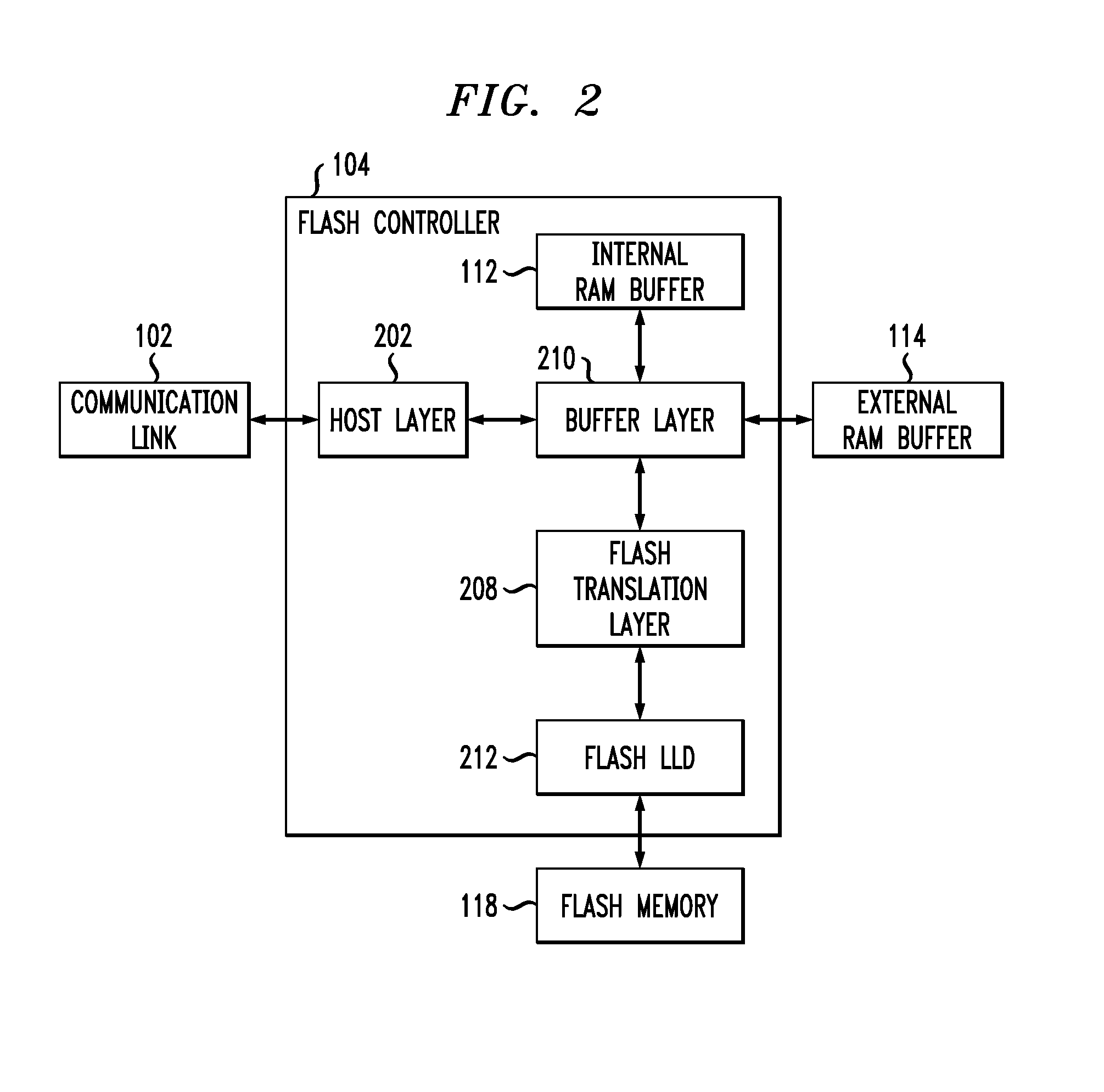Garbage Collection for Solid State Disks
a solid-state disk and garbage collection technology, applied in the direction of memory architecture accessing/allocation, instruments, electric digital data processing, etc., can solve the problems of not providing full address and data bus capability, not allowing random access to memory locations, and additional bytes of memory, so as to achieve the effect of reducing the number of erasures
- Summary
- Abstract
- Description
- Claims
- Application Information
AI Technical Summary
Benefits of technology
Problems solved by technology
Method used
Image
Examples
Embodiment Construction
[0026]In accordance with embodiments of the present invention, garbage collection operations for solid state disks (SSDs) are provided. Garbage collection operations allow a flash memory storage system to update a logical memory location by writing data to a new physical memory location without necessarily updating or erasing the previously used physical memory location simultaneously. Garbage collection operations “clean” physical memory locations containing out-of-date or invalid data at a later time. Embodiments of the present invention might provide garbage collection operations to prioritize which blocks to clean in order to minimize the performance impact of garbage collection operations on a given flash memory storage system.
[0027]FIG. 1 shows a block diagram of flash memory storage system 100 implementing a garbage collection routine in accordance with exemplary embodiments of the present invention. As shown, flash memory storage system 100 is electrically coupled to communi...
PUM
 Login to View More
Login to View More Abstract
Description
Claims
Application Information
 Login to View More
Login to View More - R&D
- Intellectual Property
- Life Sciences
- Materials
- Tech Scout
- Unparalleled Data Quality
- Higher Quality Content
- 60% Fewer Hallucinations
Browse by: Latest US Patents, China's latest patents, Technical Efficacy Thesaurus, Application Domain, Technology Topic, Popular Technical Reports.
© 2025 PatSnap. All rights reserved.Legal|Privacy policy|Modern Slavery Act Transparency Statement|Sitemap|About US| Contact US: help@patsnap.com



